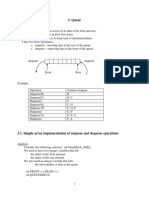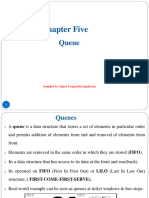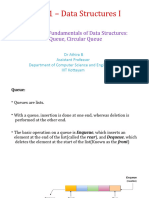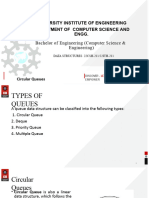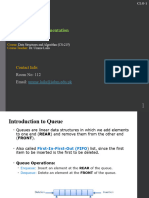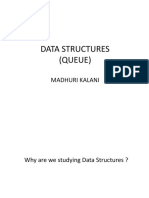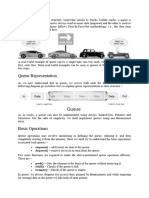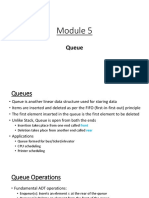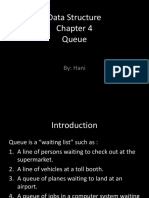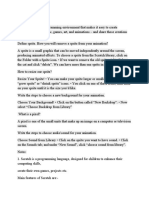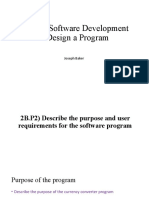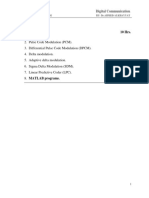0% found this document useful (0 votes)
9 views7 pagesChapter 5 Queue
This document covers the concept of queues as a data structure that operates on a FIFO basis, detailing basic operations such as enqueue and dequeue. It explains both simple and circular array implementations, along with priority queues and their applications. Additionally, it introduces concepts like demerging and merging queues to manage data with varying priorities.
Uploaded by
melese ayichlieCopyright
© © All Rights Reserved
We take content rights seriously. If you suspect this is your content, claim it here.
Available Formats
Download as DOC, PDF, TXT or read online on Scribd
0% found this document useful (0 votes)
9 views7 pagesChapter 5 Queue
This document covers the concept of queues as a data structure that operates on a FIFO basis, detailing basic operations such as enqueue and dequeue. It explains both simple and circular array implementations, along with priority queues and their applications. Additionally, it introduces concepts like demerging and merging queues to manage data with varying priorities.
Uploaded by
melese ayichlieCopyright
© © All Rights Reserved
We take content rights seriously. If you suspect this is your content, claim it here.
Available Formats
Download as DOC, PDF, TXT or read online on Scribd
/ 7

